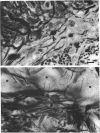Abstract
Nerve fibre contacts on Purkinje cell perikarya in the cerebellum of the small-spotted dogfish (Scyliorhinus canicula) were studied using the Cajal reduced silver technique, Golgi methods and electron microscopy. Silver staining revealed axons with thick swellings close to the base of Purkinje cells. Golgi methods demonstrated the presence of 'pincushions' of somatic spines on Purkinje cells. Electron microscopy revealed flattened fibres that formed extensive synaptic contacts with the Purkinje cell 'pincushions'. It is proposed, on the basis of the ultrastructural features, that these fibres are climbing fibres. Their possible significance in terms of the evolution of cerebellar circuitry is discussed.
Full text
PDF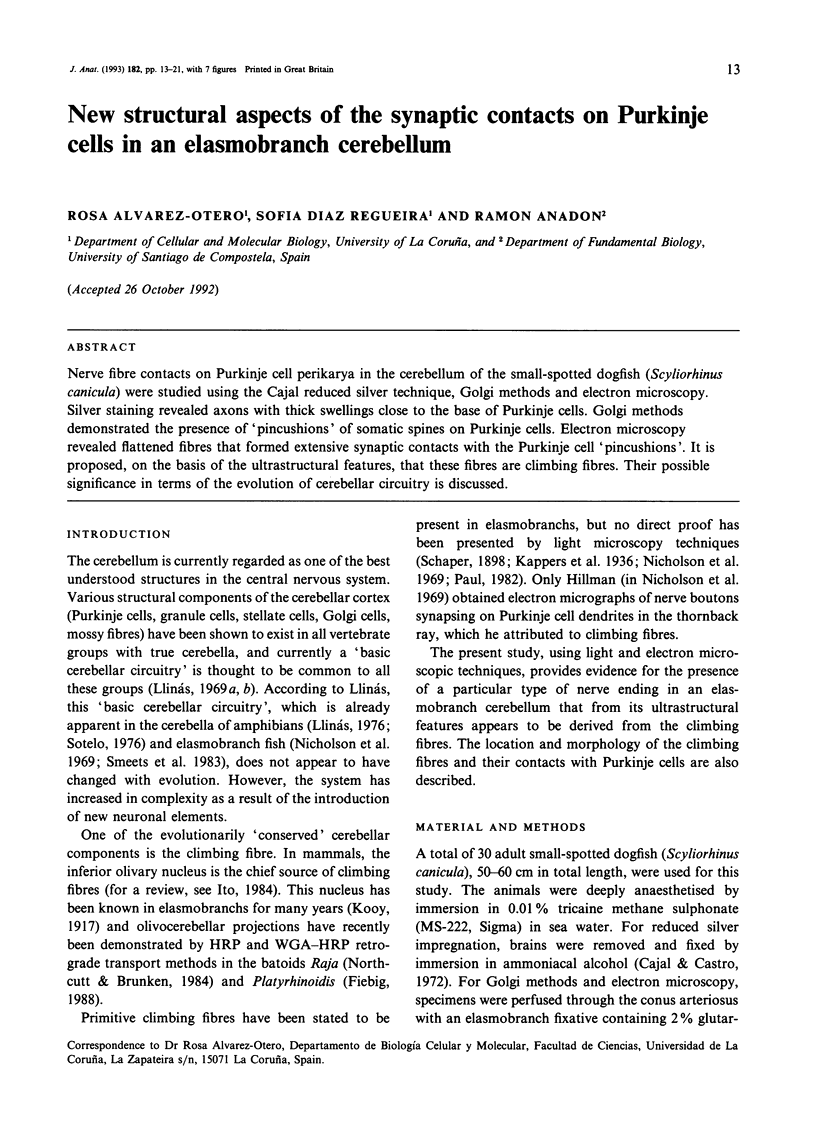
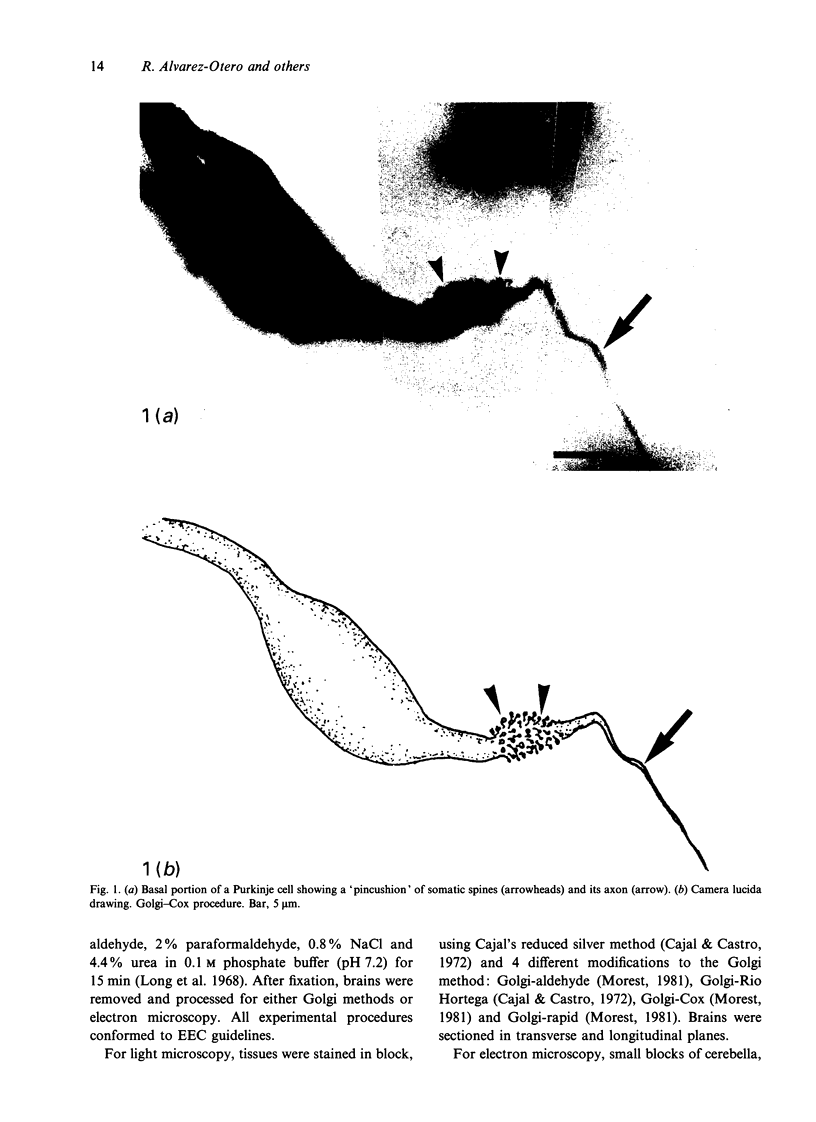
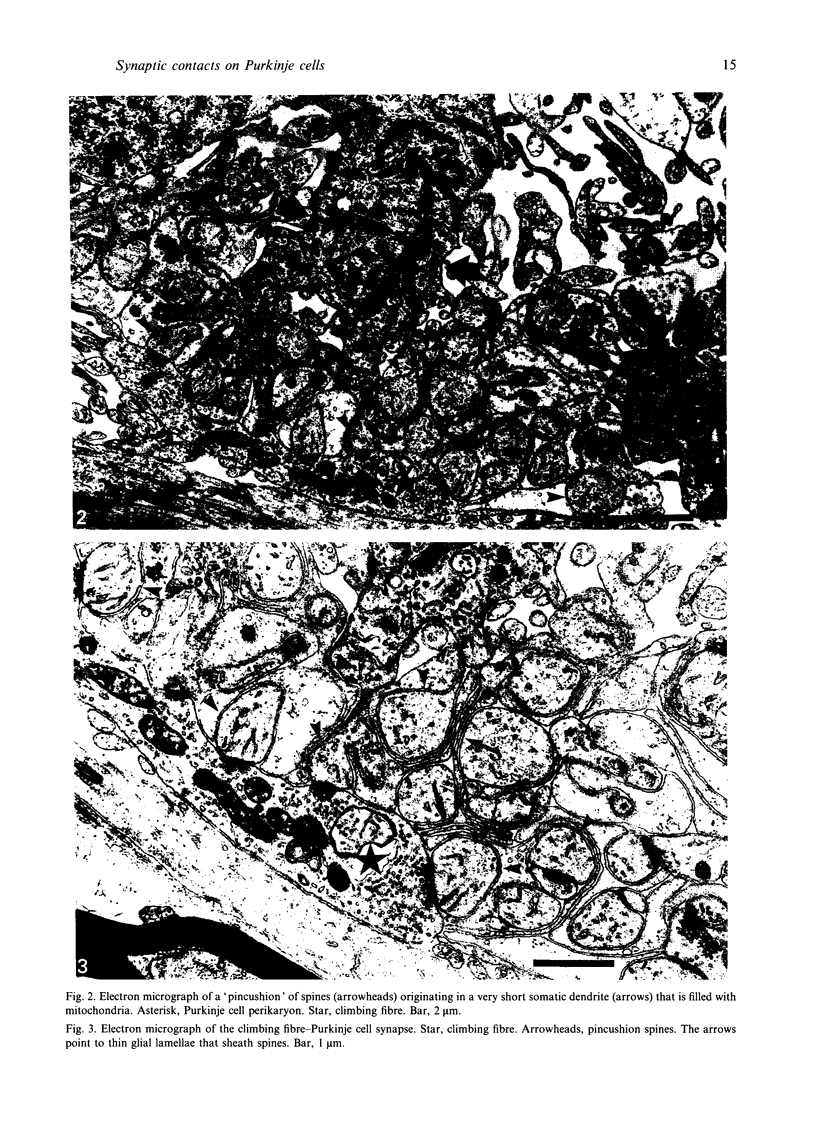
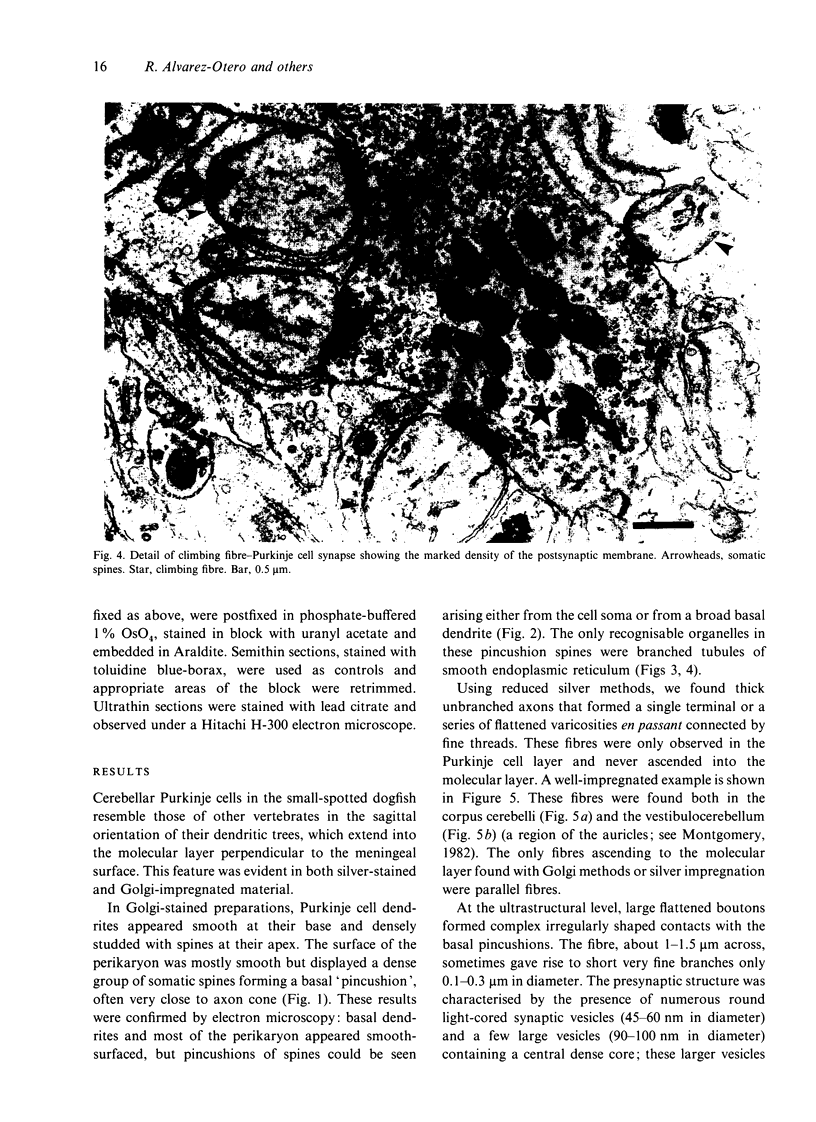
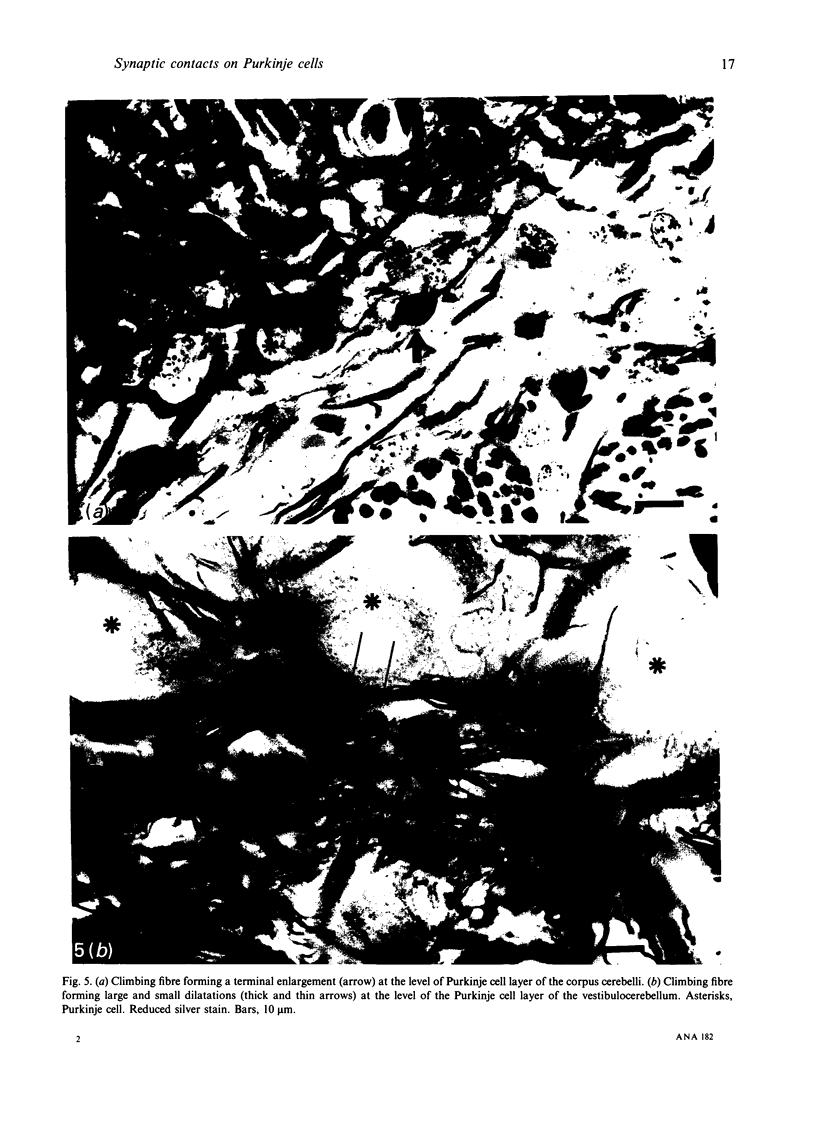


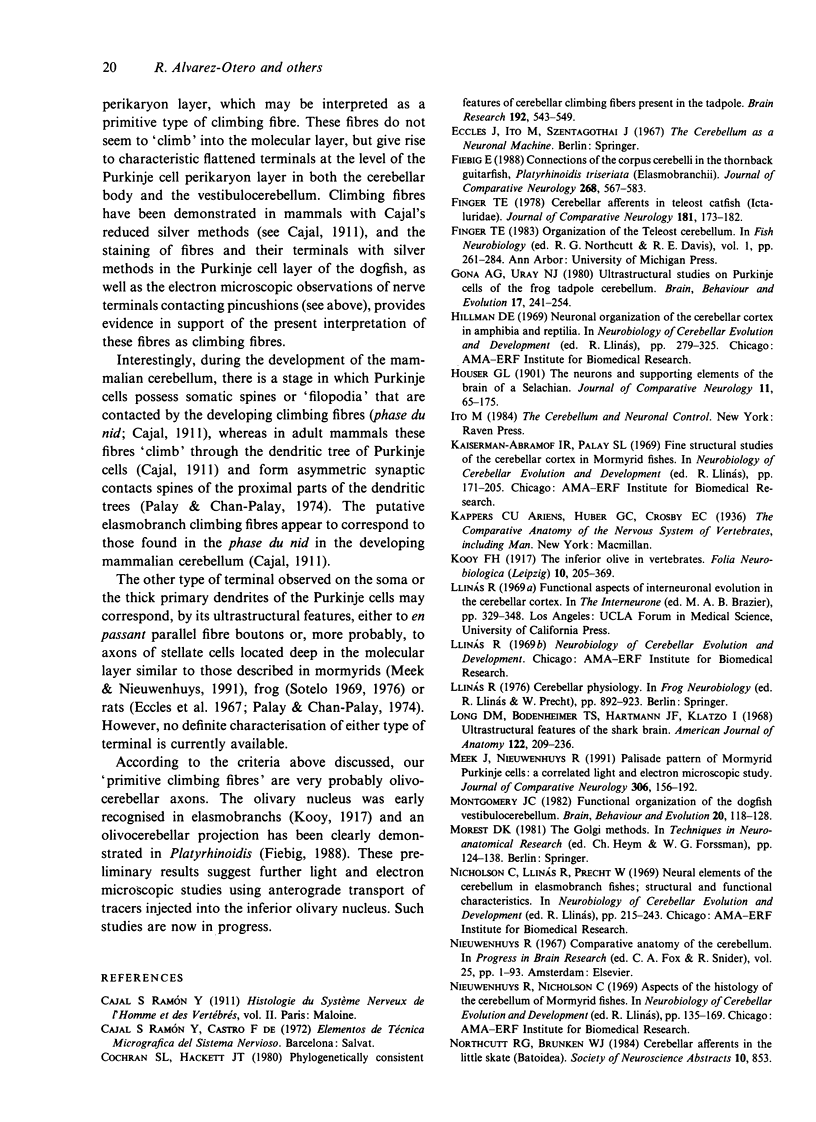
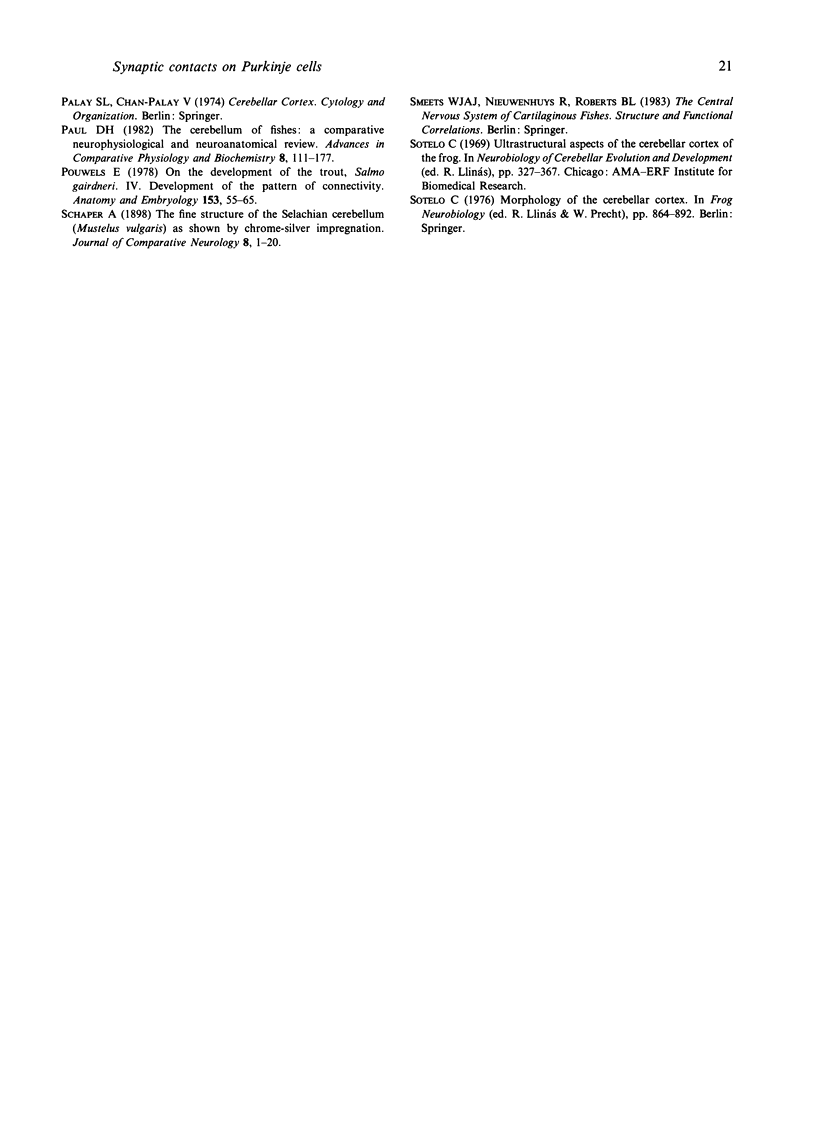
Images in this article
Selected References
These references are in PubMed. This may not be the complete list of references from this article.
- Cochran S. L., Hackett J. T. Phylogenetically consistent features of cerebellar climbing fibers present in the tadpole. Brain Res. 1980 Jun 23;192(2):543–549. doi: 10.1016/0006-8993(80)90904-x. [DOI] [PubMed] [Google Scholar]
- Fiebig E. Connections of the corpus cerebelli in the thornback guitarfish, Platyrhinoidis triseriata (Elasmobranchii): a study with WGA-HRP and extracellular granule cell recording. J Comp Neurol. 1988 Feb 22;268(4):567–583. doi: 10.1002/cne.902680407. [DOI] [PubMed] [Google Scholar]
- Finger T. E. Cerebellar afferents in teleost catfish (Ictaluridae). J Comp Neurol. 1978 Sep 1;181(1):173–181. doi: 10.1002/cne.901810109. [DOI] [PubMed] [Google Scholar]
- Gona A. G., Uray N. J. Ultrastructural studies on Purkinje cells of the frog tadpole cerebellum. Brain Behav Evol. 1980;17(3):241–254. doi: 10.1159/000121802. [DOI] [PubMed] [Google Scholar]
- Long D. M., Bodenheimer T. S., Hartmann J. F., Klatzo I. Ultrastructural features of the shark brain. Am J Anat. 1968 Mar;122(2):209–236. doi: 10.1002/aja.1001220204. [DOI] [PubMed] [Google Scholar]
- Meek J., Nieuwenhuys R. Palisade pattern of mormyrid Purkinje cells: a correlated light and electron microscopic study. J Comp Neurol. 1991 Apr 1;306(1):156–192. doi: 10.1002/cne.903060111. [DOI] [PubMed] [Google Scholar]
- Montgomery J. C. Functional organization of the dogfish vestibulocerebellum. Brain Behav Evol. 1982;20(1-2):118–128. doi: 10.1159/000121585. [DOI] [PubMed] [Google Scholar]
- Paul D. H. The cerebellum of fishes: a comparative neurophysiological and neuroanatomical review. Adv Comp Physiol Biochem. 1982;8:111–177. doi: 10.1016/b978-0-12-011508-2.50011-3. [DOI] [PubMed] [Google Scholar]
- Pouwels E. On the development of the cerebellum of the trout, Salmo gairdneri. IV. Development of the pattern of connectivity. Anat Embryol (Berl) 1978 May 31;153(1):55–65. doi: 10.1007/BF00569849. [DOI] [PubMed] [Google Scholar]







